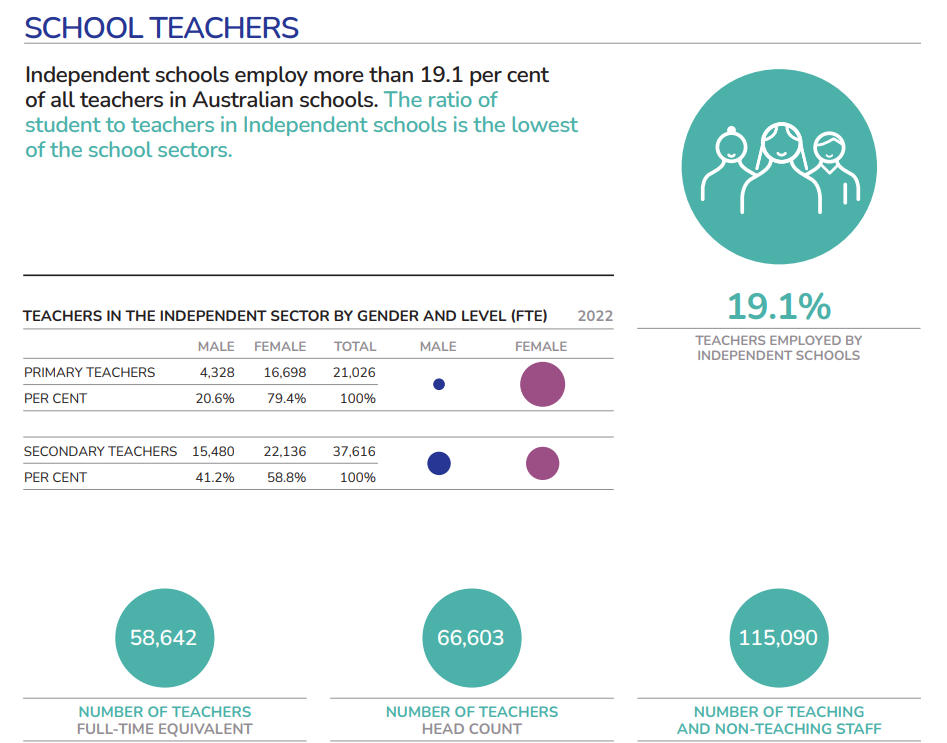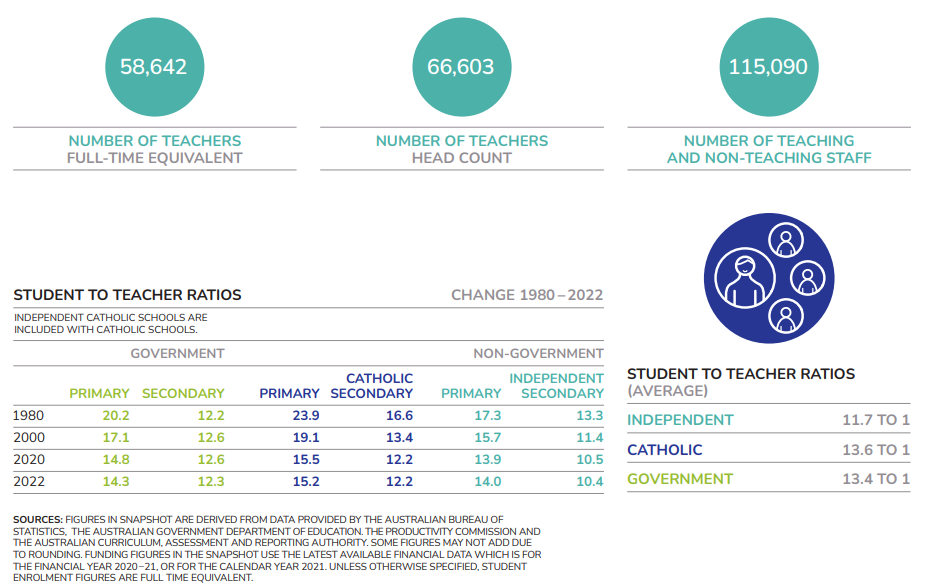
Australia’s Independent schools continue to thrive despite major challenges facing the nation’s education system, the latest annual sector snapshot by Independent Schools Australia (ISA) shows.
ISA Chief Executive Officer, Graham Catt, said the 2023 Snapshot pulls together the latest data that shows the nature of the Independent schools sector and compares some key characteristics with the government and Catholic school sectors.
“The Snapshot shows how enrolments are tracking in the different sectors, breaks down sources of funding for Independent schools and highlights some key facts about the workforce,” Catt told The Educator.
“Independent schools enrol one in six students in Australia and employ around a fifth of teachers. Seeing the nationwide data collated this way can give an interesting perspective for schools.”
Student enrolments on the rise
After seeing a 3.2% jump in enrolments in 2022, the sector now educates 688,638 (23.4%) of students nationwide, including 17,752 indigenous students and an estimated 143,500 students with disability.
The majority of enrolments over the past year were seen in Anglican schools, which enrol 168,140 (24%) of full-time equivalent students, followed by non-denominational at 14.5%, and Christian schools at 12%.

Median fees remain steady
A January 2023 report analysing fees from 635 schools found the average fee increase this year is 4.49%, up from 2.90% last year, yet the ISA’s Snapshot shows the median annual fee of Independent schools is $5,272 – a figure that has held steady for several years.
Margery Evans, chief executive of the Association of Independent Schools NSW, said Independent schools strive to minimise fee increases each year, and this has especially been the case in 2023 with the cost of living crisis worsening for many families.
“Many Independent schools have restricted their 2023 fee increases to under 3%, or less than half the current inflation rate of 7.3%,” she said.
Teaching workforce
Independent schools employ more than 19% of teachers in Australian schools, with females making up the majority of staff.
Of staff employed in primary schools, 16% were female, compared to makes at 4.3%. In secondary schools, the margin was more narrow, with 22% being female and 15% being male.

The Snapshot also revealed the ratio of student to teachers in Independent schools is the lowest of the school sectors at 11.7 to 1 compared to 13.6 to 1 in the Catholic sector and 13.4 to 1 in government schools.

Perks could see public school principals make the switch
World leading educational psychologist, Professor Herb Marsh, of the Australian Catholic University’s Institute for Positive Psychology in Education says the recognition that private schools are better resourced, and experience lower rates of occupational health and wellbeing issues may also see public school leaders migrate to the sector.
“While Independent principals tend to work longer hours, particularly during school holidays, they tend to have better resources. Consequentially, they tend to have lower quantitative, cognitive, and emotional demands, lower burnout levels, and higher general health,” Professor Marsh told The Educator.
“Independent school leaders also experience much less physical violence than government school leaders. As working conditions seem to be better in Independent than government schools, we might see a migration of the best government school principals to the private sector in the future.”
‘A holistic approach to student development’
Research by ISA has shown the main factors influencing parents’ choice of an independent school to be educational excellence, good teachers, a supportive caring environment and good facilities – attributes which have remained consistent in Australia’s independent schools for years.
Pointing to the unique strengths of an independent school education, Dr Chris Duncan, CEO of the Association of Heads of Independent Schools Australia, said it is important to note that ‘educational excellence’ does not just entail academic achievement.
“Of course, we all want students to discover and demonstrate their academic potential, but students also discover and develop interests, skills and capabilities through the co-curriculum, which has always been a special focus of independent schools,” Dr Duncan told The Educator.
“This is a holistic approach to development that is increasingly resonating with Australian parents. They want their children to have firm foundations for a fulfilling life, in all its forms.”


